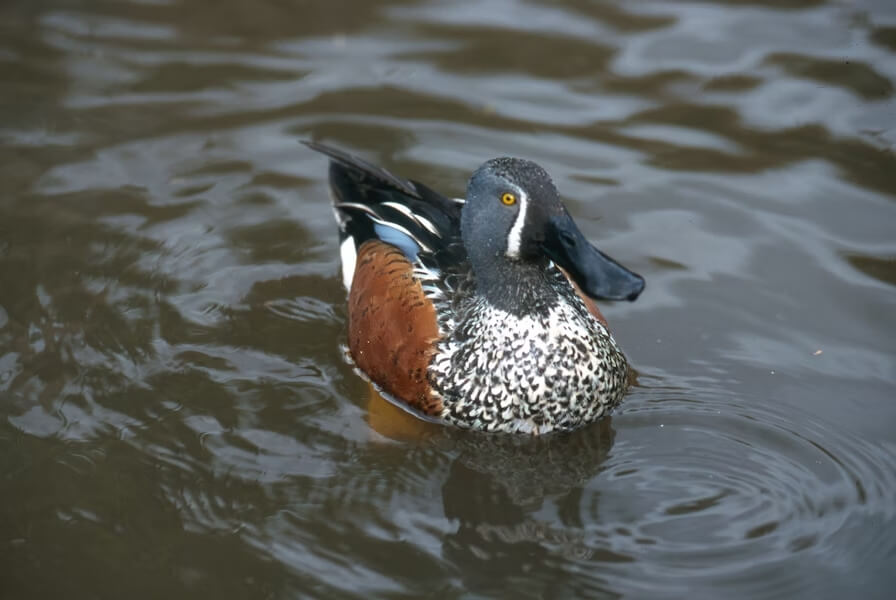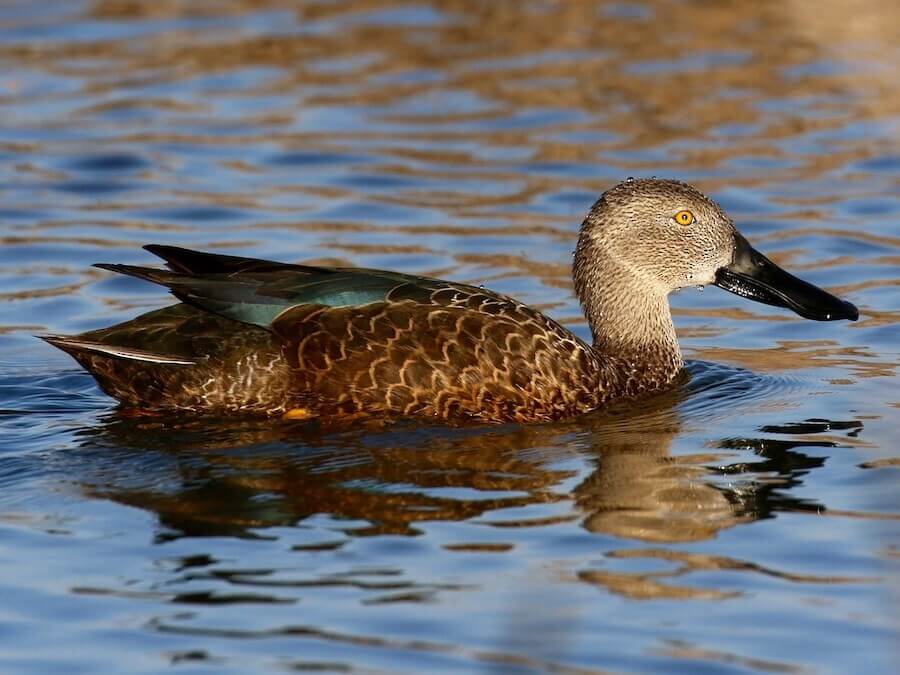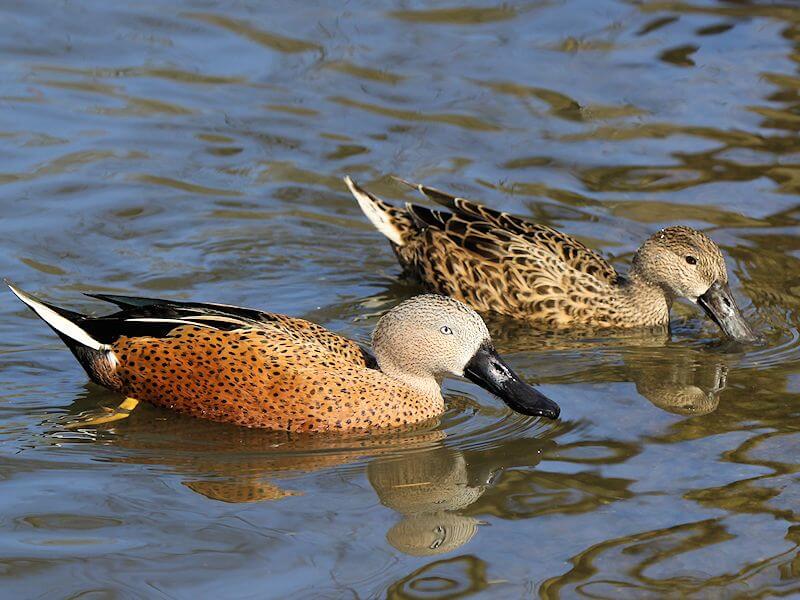4 Types of Shoveler Ducks
Common Name |
Scientific Name |
Range |
Male Plumage / Key Features |
Spatula clypeata |
North America, Europe, Asia |
Green head, white chest, rusty sides; broad spatula-shaped bill |
|
Australasian Shoveler  |
Spatula rhynchotis |
Australia, New Zealand |
Blue-grey head, white chest, chestnut sides |
Cape Shoveler  |
Spatula smithii |
Southern Africa |
Green head, white belly, chestnut body |
Spatula platalea |
South America (Chile, Argentina, Uruguay) |
Reddish body, long broad bill |
Shovelers: The Spatula-Billed Dabblers
Shoveler ducks are a group of dabbling ducks in the genus Spatula, commonly recognized for their wide, spatula-shaped bills. These specially adapted bills allow them to filter small invertebrates, plankton, and seeds from shallow water, making them highly efficient feeders in marshes, lakes, and wetlands.
Shovelers are found across North and South America, Europe, Africa, and Australasia, with each species adapted to local habitats. Their slender bodies, upright posture, and dabbling behavior make them well suited to a diet that relies on filtering rather than diving.
The Australasian Shoveler (Spatula rhynchotis) and the Red Shoveler (Spatula platalea) are examples of regional relatives that share the characteristic spatula bill and feeding style. While smaller or differently colored than the Northern Shoveler (Spatula clypeata), they perform the same ecological role in their respective habitats, justifying their inclusion in the shoveler group.
Among shovelers, no species is currently known to be extinct, but several populations, such as the Red Shoveler in South America, face pressure from wetland loss and habitat degradation, emphasizing the importance of conservation for these specialized filter feeders.


